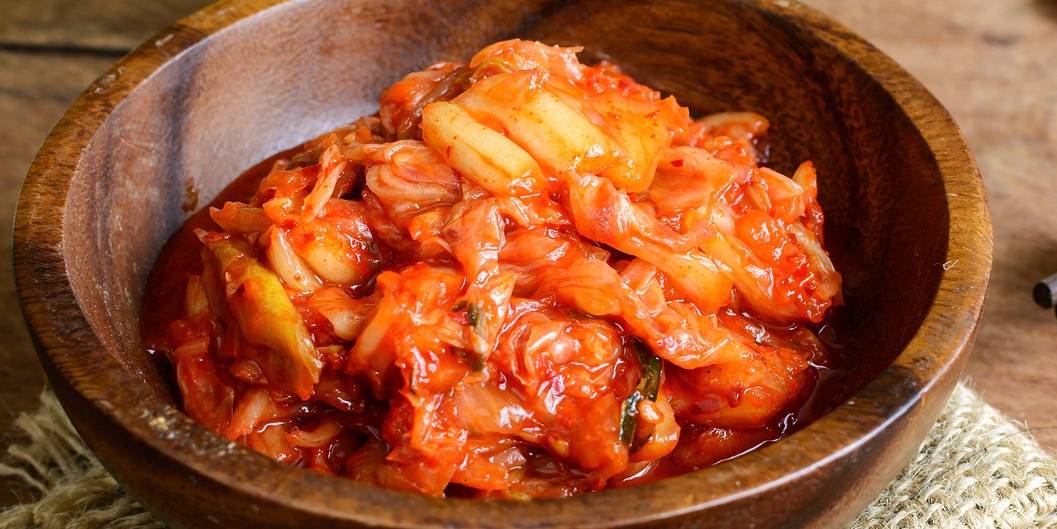Instructions
Brining Cabbage: Combine salt with water and stir to dissolve salt in a large mixing bowl (or I used a pot). Chop cabbage into about 2 inch pieces and then place pieces into the salt water. Let set for at least 2-3 hours, ideally 6-8 hours, up to 10 - stirring a few times in between.
Making the sauce: While cabbage is soaking, combine pear, tamari, ginger, chili powder and garlic in food processor/blender and process until it becomes a smooth paste.
Combine everything together: Once cabbage is ready, drain and rinse well, but save 1/4 cup (you'll use it later for packing the kimchi). Place cabbage back in large bowl/pot and combine with the green onion, carrots, radishes and the chili paste. Mix well and make sure you coat all pieces. It's easiest if you use your hands - just use gloves!
Packing: Place the kimchi in jars, packing down to close air pockets and leave about an inch at the top for air and gases (important for the fermentation process). This is where you add the reserved brine if needed to cover everything up.
Fermenting: Leave the kimchi to sit in room temperature for 1-3 days (depending on how warm your place is - the warmer, the less time). Make sure you “burp” your kimchi at least once per day during this process, to release the air pressure (just open and close lid). You may notice it bubbling, this is GOOD sign as it means the fermentation process is indeed happening! As your kimchi ferments the flavours will strengthen, so you can sample as you go to decide when you want to place in the fridge - I like to leave it for about 2 days before I start refrigerating - but it's a personal taste preference. Ideally, leave it to ferment slowly in the fridge for 5-7 days before enjoying. Once stored in the fridge, it's best to eat it within a month or two.
NOTE: This is the closest to real Korean kimchi that I make for myself - it still excludes fish and shrimp paste, as I'm personally not a fan of that, so I like to still use tamari as the replacement for that.

